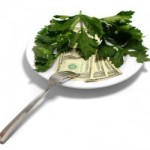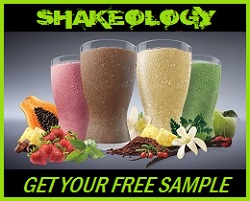7 Colors of the Phytonutrient Rainbow: How Eating a Variety of Colors Can Keep You Healthy
I am always on the lookout for helpful tips that will assist me in living a more healthy and fulfilling life. I want to provide that same content to YOU, the members of RIPPEDCLUB. So today I wanted to share with you an article from the beachbody.com newsletter. This article will give a a better understanding of what types of fruits and vegetables are available, but also how they can really help you live a more healthy life! Read carefully below!
7 Colors of the Phytonutrient Rainbow: How Eating a Variety of Colors Can Keep You Healthy
By Elisa Lenox
Why is it that advice on healthy eating usually seems to center on what not to put in our mouths? With the endless ways we’re taught to limit calorie intakes and watch out for “bad” fat and carbohydrates, it’s almost easy to forget that there’s a whole world of foods out there that don’t threaten to give you heart disease, diabetes, or an expanded waistline.

Rather than focusing on what you shouldn’t eat, let’s take some time to focus on a few beautiful, flavorful, and health-building foods you should eat—specifically, foods rich in phytonutrients, the naturally occurring pigments that lend color and chemical protection to the plant kingdom, while also offering astounding health benefits.
The study of phytonutrients (“phyto” meaning “plant” and “nutrient” meaning, well, “nutrient”), also known as phytochemicals, is a relatively new field in nutrition, with more research unfolding on these substances than can be covered in one article. However, it’s fair to say that what is currently known lends powerful credence to that ageless maternal advice “eat your vegetables.”
Scientists have categorized classes of phytonutrients that offer different properties and benefits and it just so happens that many of these classes are represented by their colors. So read on and discover why becoming a connoisseur of the plant-based nutrient spectrum is a brilliant strategy that will help to preserve both your health and physical charm.
 Blue/Purple – Anthocyanins are flavonoids that act as powerful antioxidants, neutralizing free radicals that cause aging and degenerative disease. There’s even a connection between this phytonutrient and decreased visceral (abdominal) fat! A 2008 study from Chubu University in Japan found a link between anthocyanin intake and reduced incidence of metabolic disorders, including abdominal weight gain, hypertension, and impaired glucose and insulin metabolism. True, blue anthocyanin sources include red cabbage, blueberries, blackberries, acai berries, cherries, grapes, blue potatoes, eggplant, and radicchio.
Blue/Purple – Anthocyanins are flavonoids that act as powerful antioxidants, neutralizing free radicals that cause aging and degenerative disease. There’s even a connection between this phytonutrient and decreased visceral (abdominal) fat! A 2008 study from Chubu University in Japan found a link between anthocyanin intake and reduced incidence of metabolic disorders, including abdominal weight gain, hypertension, and impaired glucose and insulin metabolism. True, blue anthocyanin sources include red cabbage, blueberries, blackberries, acai berries, cherries, grapes, blue potatoes, eggplant, and radicchio.
Orange/Yellow – Multiple studies indicate that diets rich in beta-carotene lower the risk of cardiovascular disease and some types of cancer. This amazing phytonutrient falls into the carotenoid class that (along with the flavonoid group) has been credited in a 2010 Tufts University study for providing photo protective and antioxidant action in the skin. In short, these inflammation, wrinkle, and cancer preventing nutrients protect your skin from the inside out! To get a bit of beta-carotene, try sweet potato, carrots and carrot juice, winter squash, pumpkin, and cantaloupe.
 Red – Lycopene has been in the news a lot lately for its positive influence on prostate health, but it’s also thought to prevent cervical dysplasia in conjunction with other carotenoids. In other words, it’s also good for the uterus, making it an equal opportunity nutrient. In addition, a 1996 University of Minnesota study found a significant increase in longevity based upon the blood lycopene levels of nuns living the same lifestyle, in the same conditions. If you’re ready to get into the red, try tomato and tomato products, watermelon, pink grapefruit, guava, and papaya.
Red – Lycopene has been in the news a lot lately for its positive influence on prostate health, but it’s also thought to prevent cervical dysplasia in conjunction with other carotenoids. In other words, it’s also good for the uterus, making it an equal opportunity nutrient. In addition, a 1996 University of Minnesota study found a significant increase in longevity based upon the blood lycopene levels of nuns living the same lifestyle, in the same conditions. If you’re ready to get into the red, try tomato and tomato products, watermelon, pink grapefruit, guava, and papaya.
Yellow/Green – The light absorbing properties of lutein are associated with eye health involving a decrease in cataract formation and macular degeneration. Mellow, yellow lutein sources include spinach, kale, collards, mustard and dandelion greens, summer squash, and pumpkin.
 Green – Chlorophyll’s abilities to bind toxins and decrease oxidative stress make it a powerful bodily detoxifier and explain how it can actually reduce body odor. You’ll be seeing green with chlorophyll sources like spinach, kale, Swiss chard, arugula, green beans—any green vegetable. The darker, the better.
Green – Chlorophyll’s abilities to bind toxins and decrease oxidative stress make it a powerful bodily detoxifier and explain how it can actually reduce body odor. You’ll be seeing green with chlorophyll sources like spinach, kale, Swiss chard, arugula, green beans—any green vegetable. The darker, the better.
Green/White – Another detoxifier, sulphoraphane is part of the isotheocyanate class of phytonutrients that has been cited in multiple studies as a cancer preventative and detoxifier of carcinogens. Some super sulphoraphane sources include broccoli, brussels sprouts, broccoli sprouts, cabbage, bok choy, cauliflower, and watercress.
White – The anti-inflammatory and antimicrobial qualities of allicin lend to its reputation as an inhibitor of heart disease and gastric cancer as well as a potent immune booster. All-around awesome allicin sources include garlic, onion, leek, shallot, and chives.
The possibilities are endless when it comes to polychromatic eating. Use a food processor to quickly shred red cabbage and brussels sprouts into an easy chopped salad with pomegranate seeds, blanched almonds, and a homemade lemony dressing, or gently wilt kale or Swiss chard in olive oil with garlic, onion, and thinly sliced yellow bell pepper. Spiced sweet potatoes or winter squash bake in less than 40 minutes for a simple, energy-boosting carbohydrate serving. Fruit and leafy green packed smoothies are a fantastic way to throw together a quick, nutrient dense breakfast and don’t forget the most convenient, and superfood-packed meal on the go . . . Shakeology. Where else can you get over 20 phytonutrients and antioxidants in one delicious and easily portable package?
How can you ensure that you’re drenching your system in these healthful, beauty-boosting nutrients every day? Make it a personal mission to sample from a wide variety of fruits and vegetables daily and get as innovative with your recipes as your imagination and nature’s color palette will allow. Get creative and, before you know it, you’ll be benefiting from the phytonutrient rainbow!
Click here for the full article on Beachbody.com
Related Posts















Recent Comments